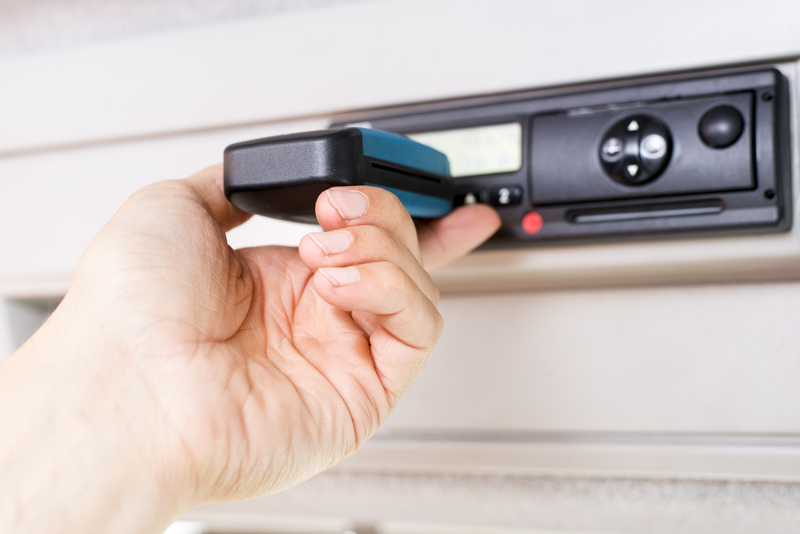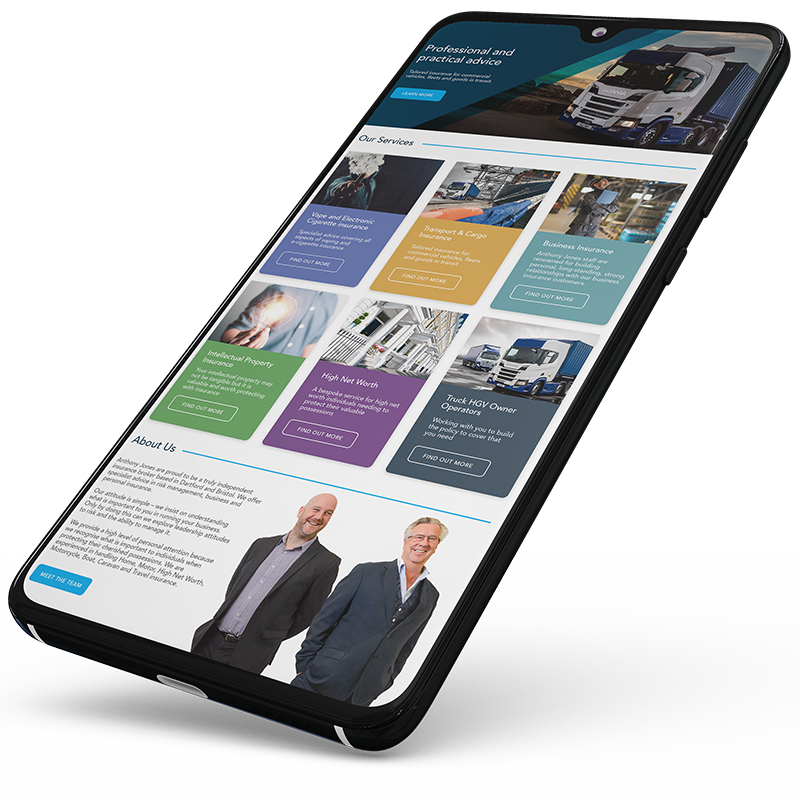If you’re a commercial driver, you may have to use a tachograph to record the time you spend on the road, along with your speed and the distance you travel.
However, some vehicles are exempt from using tachographs. In this post we’ll outline the common tachograph exemptions, and when they apply.
At Anthony Jones we specialise in insurance for the transport and logistics sector. If you have any questions about your legal obligations as a driver or fleet manager, call us on 020 8290 9099 or email commercial.motor@anthonyjones.com.
What is a Tachograph?
A tachograph is a device that records information about your driving habits. Primarily, this is to help you and your employer follow the rules on drivers’ hours. But employers may also use tachograph data to improve driver behaviour in their fleet. If the data suggests that a certain driver is prone to speeding, for example, the employer can intervene as early as possible.
Tachographs can be analogue or digital. But any commercial vehicle registered after 1 May 2006 must be fitted with a digital tachograph.
Digital tachographs store data on smart cards. You can read our guide to how digital tachograph cards work here.
What Vehicles Require a Tachograph?
All commercial vehicles that are covered by assimilated rules (formerly known as EU rules) and AETR rules must use a tachograph.
Can Drivers Be Tachograph Exempt?
Tachograph exemptions always apply to vehicles, and never to drivers. It’s a common misconception that if you’re self-employed or a freelancer, then tachograph rules do not apply to you. This is not the case – the criteria for exemption is always based on your vehicle, and how you use it.
Tachograph Exemptions
You may be exempt from using a tachograph if you’re vehicle is not covered by assimilated or AETR rules, or if you’re exempt from the rules applying to drivers’ hours. However, vehicles exempt from these rules will instead have to follow GB domestic rules which may still require you to use a tachograph to record your drivers’ hours.
So below, we will explain the specific types of vehicles and circumstances that make you eligible for exemption, which include:
- Vehicles weighing less than 3.5 tonnes
- Commercial vehicles operating within 100km of your base – but only if the journey meets all exemption criteria
- Recovery, emergency and utility vehicles under certain circumstances
- Agricultural vehicles meeting the required rules
- Other exemptions – such as some uses of exhibition vehicles.
Vehicles Weighing Less Than 3.5 Tonnes
Any commercial vehicle that has a maximum authorised mass (MAM) of 3.5 tonnes or less is exempt from using a tachograph.
This might include transit vans, car-derived vans, and other small vehicles. But note that adding a trailer to your vehicle could boost your MAM beyond 3.5 tonnes, which could mean that tachograph rules would apply.
Commercial Vehicles Operating Within 100km of Your Base
Some seem to think that you are automatically exempt from using a tachograph if the commercial vehicle operated within 100km of your business base. This is not the case.
This exemption only applies if you meet all of the exemption criteria:
- The driving is not classed as the main activity of the driver. Full-time professional drivers may have to use tachographs at all times.
- The vehicle’s MAM is no higher than 7.5 tonnes.
- The vehicle is being used to carry equipment or materials that the driver intends to use themselves. But if the vehicle is being used to transport goods to customers, then the exemption probably will not apply.
Recovery, Emergency, and Utility Vehicles
Recovery vehicles such as tow trucks are exempt from tachograph rules when they’re being used for recovery purposes. But a tow truck that’s transporting a new or used car for sale would not be exempt.
All emergency, utility, and armed forces vehicles are exempt from tachograph use, so long as you’re operating them for their intended use. So, if you’re not directly part of the emergency services or a utility company, you must be working under contract to them.
Agricultural Vehicles
All agricultural, horticultural, forestry, and fishery vehicles are exempt from tachograph use so long as they are:
- Used within 100km of your base of operations
- Used for relevant operations, such as transporting produce, livestock, or machinery
Other Exempt Vehicles
Other vehicles that may be exempt from tachograph use may include:
- Vehicles that are currently undergoing road testing or maintenance. If you’re driving a commercial vehicle to an authorised testing facility, for example, you may not have to log the journey to and from the centre.
- Commercial vehicles that are not being used for business purposes (for “hire or reward”).
- Heritage, parade, and exhibition vehicles. For instance, if you’re driving a vintage HGV to a motor show, you won’t have to use a tachograph. But you will if you’re using the heritage vehicle for paid promotional work.
Penalties for Breaking Tachograph Rules
The penalties drivers and operators can face for breaking tachograph rules vary depending on the severity of the offence. They can range from fixed fines all the way up to the revoking of drivers or even operators licences and imprisonment for more serious tachograph-related offences.
It is the operator’s responsibility to ensure all vehicles that require tachographs have compliant tachographs fitted and that their drivers meet regulations, as well as the drivers’ responsibility that their vehicle is abiding by the law.
Proving You’re Exempt From Tachograph Use
You may have to demonstrate that you’re exempt from using a tachograph during a compliance audit, or a roadside check.
So, think of how you might demonstrate you meet any of the above criteria:
- Route maps and guidance systems could evidence your operating radius.
- Invoices, delivery records, your work diary, or your manual records, could demonstrate how you use the vehicle.
- Maintenance records could demonstrate that you’re currently heading to a garage or ATV.
Are You Using Tachographs Correctly in Your Fleet?
John Donaghy, Senior Manager, Commercial Motor and Fleet Risks says:
“If you’re a fleet manager, as a condition of your operator’s licence you’ll be expected to understand and apply all tachograph rules correctly, and to train your drivers accordingly. This extends to understanding when tachograph exemptions apply.
“As a result, you may be held liable for all costs and damages should an incident ever occur as a result of tachograph infringements – if a driver has an accident having spent too many hours on the road, for instance.
“At Anthony Jones, we can help you understand your legal obligations as a fleet manager, and we can also advise you on essential fleet risk management policies and procedures. We can then help you access bespoke commercial motoring insurance that will meet all of your cover requirements at a competitive price.”
If you have any questions about your legal obligations as a driver or fleet manager, call us on 020 8290 9099 or email commercial.motor@anthonyjones.com.


